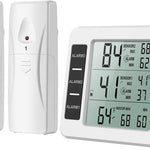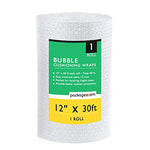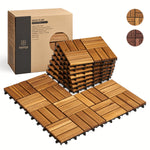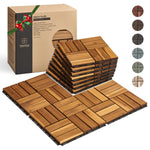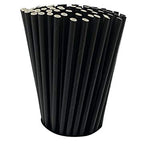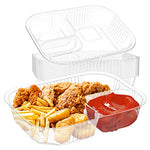You have no items in your shopping cart.
Welcome to the ultimate guide to reusable water bottles for school! Staying hydrated throughout the day is crucial, especially for students who need to maintain focus and energy levels. With concerns about the environment and the need to reduce single-use plastic waste, reusable water bottles have become increasingly popular. In this comprehensive guide, we will explore the benefits of using reusable water bottles, provide tips for choosing the right one, and offer practical advice on caring for and maintaining these bottles.
Reusable Water Bottles for School: Why They Matter
When it comes to choosing the best water bottle for school, opting for a reusable one is not only environmentally friendly but also offers numerous benefits for students. Let's take a closer look at why reusable water bottles matter:
1. Reducing Plastic Waste
By using reusable water bottles, students can significantly reduce the amount of single-use plastic waste they generate. According to the Environmental Protection Agency (EPA), Americans throw away millions of plastic bottles every hour, and a significant portion of them end up in landfills or oceans, causing harm to wildlife and ecosystems. By choosing reusable bottles, students can make a positive impact on the environment and contribute to a greener future.
2. Cost-Effective Solution
Investing in a reusable water bottle for school is a cost-effective solution in the long run. Instead of purchasing bottled water or other beverages throughout the day, students can simply refill their reusable bottles at water fountains or from home. This not only saves money but also encourages students to drink more water, which is essential for their overall health and well-being.
3. Hydration Anytime, Anywhere
With a reusable water bottle by their side, students have easy access to hydration anytime and anywhere. They no longer need to rely on vending machines or cafeteria beverages, which may not always be the healthiest options. By carrying a reusable bottle, students can stay hydrated throughout the day, which can improve their concentration, cognitive function, and overall performance at school.
4. Personalized Style and Expression
Reusable water bottles come in a wide variety of colors, designs, and sizes, allowing students to express their personal style. From sleek stainless steel bottles to vibrant and fun patterns, there is a water bottle to suit every student's taste. By choosing a bottle that resonates with their personality, students are more likely to develop a strong attachment to it, ensuring they use it consistently.
5. Promoting Health and Well-being
Water is essential for maintaining good health, and having a reusable water bottle for school encourages students to drink enough water throughout the day. Proper hydration can prevent dehydration, headaches, and fatigue, while also supporting healthy digestion and metabolism. By promoting healthy habits, reusable water bottles contribute to the overall well-being of students.
Choosing the Right Reusable Water Bottle for School
Selecting the perfect reusable water bottle for school can be overwhelming due to the wide range of options available. However, considering a few key factors can help make the decision easier. Here are some essential factors to keep in mind:
1. Material: Plastic, Stainless Steel, or Glass?
Reusable water bottles are commonly made of plastic, stainless steel, or glass. Each material has its own advantages and considerations:
- Plastic bottles: Lightweight and durable, plastic bottles are often the most affordable option. Look for bottles made from BPA-free materials to ensure safety.
- Stainless steel bottles: These bottles are known for their durability and ability to maintain the temperature of both hot and cold beverages. They are also resistant to odors and stains.
- Glass bottles: Ideal for those concerned about potential chemical leaching, glass bottles are non-toxic and do not retain flavors or odors. However, they are more fragile and may not be suitable for younger students.
Consider the student's preferences, the intended use, and the bottle's durability when selecting the material.
2. Size and Capacity
The size and capacity of the water bottle are important considerations. Larger bottles, such as 32-ounce ones, are suitable for students who prefer carrying more water with them. However, keep in mind that larger bottles can be heavier and may not fit comfortably in smaller backpacks. Smaller bottles, such as 16-ounce ones, are generally more compact and easier to carry.
3. Leak-Proof Design
No one wants a water bottle that leaks in their backpack, causing a mess and potentially damaging books or electronic devices. Look for bottles with leak-proof designs and secure lids. Many bottles now feature innovative locking mechanisms and silicone seals to prevent leaks.
4. Easy to Clean
Cleaning and maintaining a reusable water bottle should be hassle-free. Bottles with wide mouths are easier to clean, as they allow for thorough scrubbing and the use of cleaning brushes. Additionally, dishwasher-safe bottles are convenient for students and parents alike.
5. BPA-Free and Non-Toxic
When choosing a reusable water bottle, ensure it is free of Bisphenol A (BPA) and other harmful chemicals. BPA is commonly found in certain plastics and has been associated with various health risks. Opting for BPA-free bottles ensures the safety of students.
6. Easy to Carry and Transport
Consider the bottle's portability and ease of carrying. Look for features such as carrying handles, attachable straps, or clips that can be attached to backpacks. These features make it more convenient for students to carry their water bottles throughout the day.
Caring for and Maintaining Reusable Water Bottles
To ensure the longevity and cleanliness of reusable water bottles, proper care and maintenance are essential. Here are some tips to keep in mind:
1. Regular Cleaning
Regularly cleaning the water bottle is crucial to prevent the buildup of bacteria, mold, or unpleasant odors. Wash the bottle with warm water and soap after each use. For thorough cleaning, use a bottle brush to reach all areas, especially the bottom and the narrow neck of the bottle. Rinse the bottle thoroughly to remove any soap residue.
2. Avoid Harsh Chemicals
While it's important to keep the bottle clean, avoid using harsh chemicals or bleach, as they can degrade the bottle's material or leave behind harmful residues. Stick to mild dish soap or a mixture of water and vinegar for cleaning.
3. Proper Drying
After washing, ensure the water bottle is completely dry before storing or refilling it. Leaving moisture inside the bottle can promote the growth of bacteria or mold. To dry the bottle thoroughly, place it upside down in a dish rack or use a clean towel to remove any remaining moisture.
4. Store with the Lid Off
To prevent the formation of unpleasant odors or mold, store the water bottle with the lid off. This allows air circulation, reducing the risk of moisture buildup.
5. Check for Wear and Tear
Regularly inspect the water bottle for any signs of wear and tear, such as cracks, leaks, or damaged seals. If you notice any issues, replace the bottle to ensure continued safety and functionality.
FAQs About Reusable Water Bottles for School
1. Are reusable water bottles safe for kids?
Absolutely! Reusable water bottles are safe for kids when made from non-toxic materials such as BPA-free plastics, stainless steel, or glass. Ensure the bottle is age-appropriate and free from any sharp edges or small parts that can pose a choking hazard.
2. Can I put hot beverages in a reusable water bottle?
It depends on the material of the bottle. Stainless steel bottles are known for their excellent heat retention and can safely hold hot beverages. However, plastic bottles may not be suitable for hot liquids, as they can warp or release potentially harmful chemicals. Always check the manufacturer's guidelines for temperature limitations.
3. How often should I replace a reusable water bottle?
The lifespan of a reusable water bottle depends on the quality, material, and frequency of use. Inspect the bottle regularly for signs of wear and tear. If you notice cracks, leaks, or a degraded seal, it's time to replace the bottle. With proper care, high-quality reusable water bottles can last for several years.
4. Can I personalize my reusable water bottle?
Yes! Personalizing your reusable water bottle adds a fun touch and makes it easily identifiable. Consider using stickers, labels, or even getting the bottle engraved with your name or favorite design.
5. Are there reusable water bottles with built-in filters?
Yes, there are reusable water bottles with built-in filters that can remove impurities, such as chlorine, heavy metals, or odors, from tap water. These bottles are an excellent choice for students who want to have access to clean and filtered water wherever they go.
6. Can I use my reusable water bottle for drinks other than water?
Absolutely! While reusable water bottles are primarily designed for water, many can be used for other beverages like juice, tea, or sports drinks. Just ensure you clean the bottle thoroughly after each use to prevent flavor transfer or staining.
Conclusion
Choosing a reusable water bottle for school is a simple yet impactful decision that benefits both students and the environment. By investing in a high-quality, durable, and safe water bottle, students can stay hydrated, reduce single-use plastic waste, and express their personal style. Remember to consider factors like material, size, leak-proof design, ease of cleaning, and portability when selecting the perfect water bottle. With proper care and maintenance, reusable water bottles can accompany students on their educational journey, promoting health, hydration, and sustainability.


